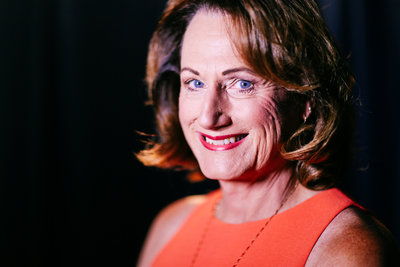
For most, a morning ritual consists of brushing one’s teeth, eating breakfast, maybe a cup of coffee or two and, of course, getting dressed before heading out the door. But imagine not being able to put on clothing that expresses who you really are.
For Dr. Brianna Stiller, age 61, a transgender woman and coordinator for positive behavior interventions and supports (PBIS) in the Eugene 4J School District, it wasn’t until she was 53 when she decided to publicly dress as a woman.
For the past 31 years, Stiller has worked as a school psychologist, and in the last 10, the PBIS coordinator for all 4J schools.
“Brianna has been doing this work since day one,” says Carmen Urbina, former 4J equity, diversity and inclusion manager. “Her whole professional career for 4J, that’s been her role to make every child safe, to make every single building safe and to work with staff to be able to achieve that.”
Safety means an environment free of harassment and bullying.
A few years ago, Urbina and Stiller wrote the student climate survey — an anonymous survey distributed through the 4J district designed to assess equity, such as how students of color, students with disabilities, female students and LGBTQA students are treated by fellow peers and 4J faculty.
And just last year, Urbina, Stiller and Jennifer Harris, a 4J school counselor, wrote the 4J Gender Nonconforming Policy — a policy that specifically protects LGBTQA students from harassment and educates staff and faculty on how to engage and protect these students. Implemented by 4J in 2015, it’s the first gender policy passed in a public school district in the state of Oregon, and one of only a handful in the entire country.
As Stiller and her colleagues work to create a safer place for all students in 4J, Stiller’s own experience in the district has evolved.
After working as an intern for 4J and earning a Ph.D. in educational psychology from the University of Oregon, 4J hired Stiller as a school psychologist in 1986. The district did not know she privately identified as a woman.
Even though Stiller knew since she was six that she was a girl, Stiller used male pronouns at work and described her style from the time she was hired until about eight years ago as androgynous.
As Stiller expressed her identity outside of work during her first years working for 4J, parents began complaining to the district and principals. While principals were supportive of Stiller, explaining to parents that she was an outstanding school psychologist and that gender identity was irrelevant to her work performance, some 4J school district administrators were less supportive, Stiller says.
Around 1991, Stiller recalls one 4J administrator “did his best to discourage me from being out in public” by telling Stiller that parents “believe this is the work of the devil and it would be wise to be extremely discreet.” While Stiller says the administrator had no ill intent, he did believe being transgender was a choice.
During the last decade, she says 4J district leaders have been 100 percent supportive, “all the way from the school board to the superintendents to the directors and principals, and so many of my colleagues.”
It was eight years ago that Stiller reached what she calls a turning point.
In 2008, Community Alliance of Lane County (CALC) donated a photo display featuring a diverse group of local individuals and their biographies at a 4J elementary school where Stiller was working. One biography included a genderqueer individual who had pink tresses and facial hair.
A number of 4J school parents wanted the display taken down because, according to Stiller, some felt the presentation of a genderqueer person was inappropriate for children to see at school.
Again parents complained, even picketed, and the school principal ultimately decided to remove the display. The night after it came down, Stiller recalls crying herself to sleep.
After a meeting at work, Stiller says then-CALC coordinator Sally Sheklow said to her: “This is never gonna change unless people like you step up.”
It was after this moment that Stiller’s public transition began. Stiller informed her colleagues about her preferred name and gradually began wearing make-up, nail polish, and then skirts and dresses at work. Stiller says many co-workers were supportive.
After the school took down the photo display, Stiller and Urbina also began collaborating with the University of Oregon and its UOTeachOut — an annual gender diversity summit — and started the Pink Prom, an inclusive prom for LGBTQA students at 4J, a desire voiced by those students.
Urbina and Stiller also worked on the survey, which, based on student responses, reported that 54 percent of students observed bullying and harassment toward LGBTQA students at least once a month back in the 2009-2010 school year.
Since then, 4J middle school and high school students take the survey annually. According to results, harassment and bullying of LGBTQA students at 4J schools have dropped to 26 percent.
This spring, Roosevelt Middle School students awarded Stiller with a Peace Hero Award. Upon accepting, she shared a piece of advice she had learned through her own journey.
“I told them: Rights are rarely given, they have to be claimed. I want all of you to claim the right to be yourself, and don’t do what I did. Don’t wait 40 years. Do it now,” Stiller says. “So my hope for LGBTQA youth, is that 10, 15 years from now, none of this will be an issue anymore. And we’ve made huge gains.”